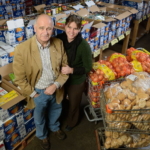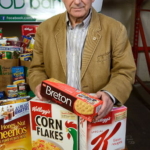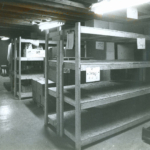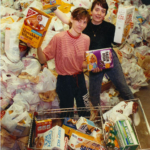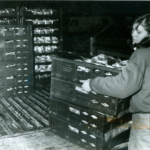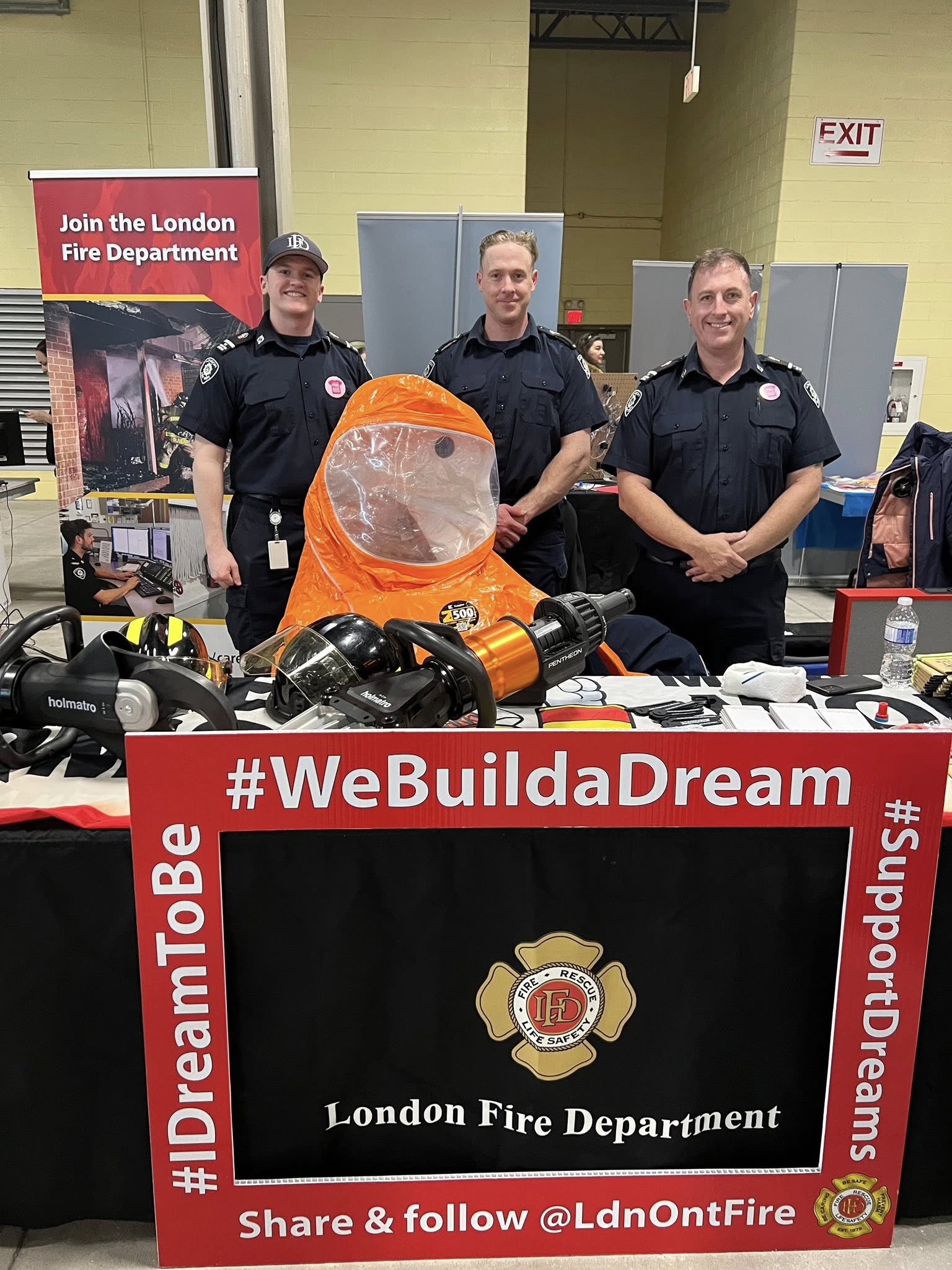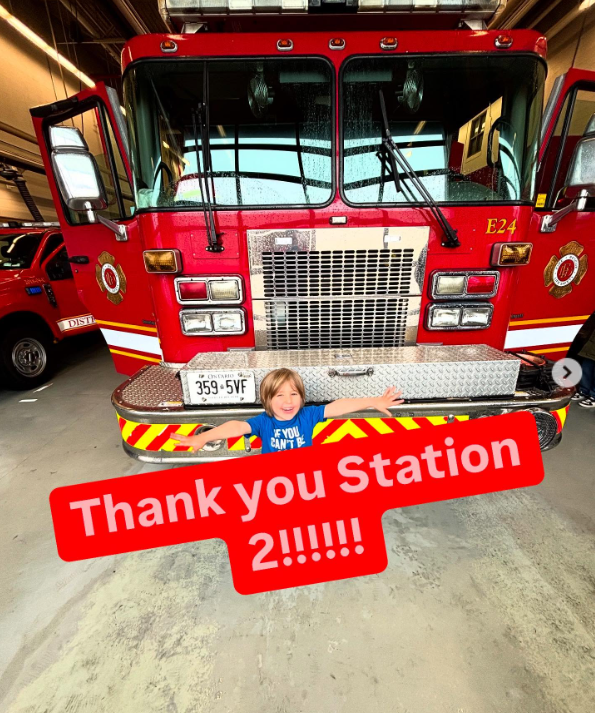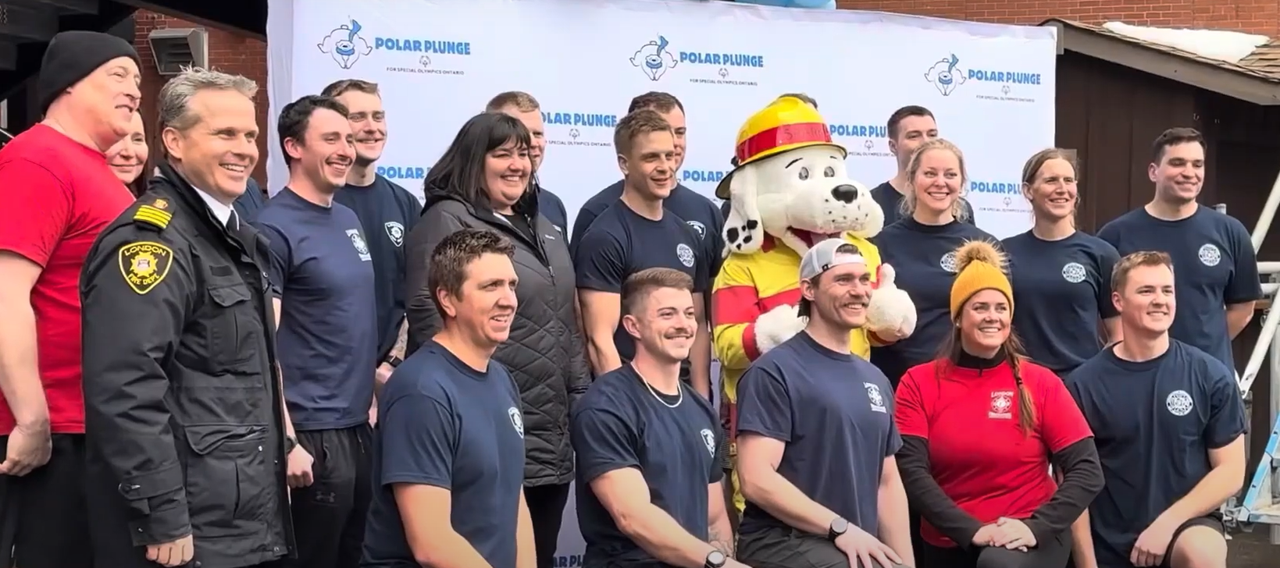London Food Bank: When it began 30 years ago, the food drive was seen as a temporary answer to hunger
Thirty years ago, a group of volunteers starting a food bank in London figured it’d likely be a temporary collection and distribution depot to tide people over the recession.
“Back then, the belief was you have a recession and you bounce back,” London Food Bank director Glen Pearson says. “We just wanted to help people with emergency food.”
He admits to being naïve about what he and others were taking on.
- Glen Pearson and Jane Roy at the London Food Bank which is marking its 30th year in London. (MORRIS LAMONT, The London Free Press)
- Glen Pearson at the London Food Bank which is marking its 30th year in London, Ontario. Photo taken on Thursday April 6, 2017. MORRIS LAMONT/THE LONDON FREE PRESS /POSTMEDIA NETWORK
- Jane Roy at the London Food Bank which is marking its 30th year in London, Ontario. Photo taken on Thursday April 6, 2017. MORRIS LAMONT/THE LONDON FREE PRESS /POSTMEDIA NETWORK
- Glen Pearson, executive director of The London Food Bank, board chairman Gord Harrison and volunteer Mike Downing load up their hotdogs during a barbecue marking the successful conclusion of food drive. (April 2, 1988)
- Empty shelves in the basement of the London and Area Food Bank at 772 Dundas Street. (March 1990)
- Jane Roy of The London Food Bank and Jennifer Hemming a volunteer student with the Saunders Serve program at Saunders S.S. help with sorting of food donations from several malls after the Breakfast For Kids food drive ended. (October 6, 1990)
“We didn’t have a clue what we were doing. We were riding a crest of so much public support. I don’t think we knew what the future would be,” he said Thursday.
Thirty years later, balancing the sad permanency of the London Food Bank is the growth in food and anti-poverty advocacy — as well as the onslaught of public support, he said.
“When you look at the things the food bank ended up getting involved in, it does tell part of the story of what London has been going through.”
This year marks the three-decade anniversary of the London Food Bank and Saturday marks the start of the 30th annual spring food drive through donor bags inserted for London readers in The London Free Press.
Readers will probably notice something different this year: The wrong bags were produced this year – with one side incorrectly stating this is the Business Cares annual drive, and the other side blank.
Because of the inserting requirements, readers will see only the blank side when they open the paper. Pearson and Roy are taking it in stride.
- Firefighter David Warren piles up the bags of donated food at London firehall No. 6 on Oxford Street during London’s spring food Share-a-thon. (March 26, 1988)
- Glen Pearson, executive director of London Area Food Bank stands behind some of the nutritional type foods which he hopes will be collected during the Breakfast for Kids Food Drive. (September 1990)
- Jane Roy, assistant director of the London and Area Food Bank, unloads a supply of bread on Friday, the bread is donated weekly by Dempster’s. (November 23, 1990)
- Officials of the London and Area Food Bank are hoping the city’s annual spring food drive will fill the empty gaps on these shelves. (March 19, 1990)
- London and Area Food Bank at 772 Dundas Street. (March 1990)
Roy suggested people write what they think about the food bank before sending it back, or get children to draw on the bags.
“The public has been with us so long, they’ll understand the bags,” Pearson said.
Pearson remembers asking Gerard Kennedy, then the executive director of the slightly older Toronto Daily Break Food Bank, what London should expect for the first food drive, given this city’s population. The answer, 40,000 to 75,000 pounds.
“It was way more than 40,000 to 70,000 pounds of food,” Pearson said. “We worked day and night with that stuff. That was my first clue the public really wanted in, because it was food and not money, and they saw it as a really practical way of helping.”
So much food came in, they had to rent extra warehouse space. City firehalls filled with food and trucks had to be parked outside, said Pearson, then a firefighter who asked for storage help from the department.
A few bags had frozen food inside. “People thought the food was going to people right away. Now, the public is very sophisticated in what they give. They know what they’re doing.”
The first drives inspired a new, level style of volunteer involvement, Pearson said. No longer was it a few church leaders or agency leaders funded by government doing the lion’s share of the work. Families, children, schools — all got involved in collecting food. Corporate responsibility grew with the London Business Cares drives, which remain the biggest annual collections, he said.
The annual food drives have also been supplemented by people donating year-round, including bags they save for a few weeks or months.
Over the years the role of the food bank in London and other cities has expanded, as well. The London Food Bank helped to create the Poverty Research Centre at King’s University College and guide a food assessment of the region that led to a new food policy council.
The food bank itself has also changed in response to the growing awareness of health, Roy said.
“One of the big changes is that people are more and more conscious of the food choices they make,” she said
“The food bank is still built around an emergency and making sure people get food and get something they can eat and tide over. Still, we are conscious of what we are putting in our bodies.”
Everybody gets eggs, milk, bread — just like they used to. But the food bank uses financial donations to ensure clients receive fresh food as well, she said.
A few years ago, Pearson and Roy floated the idea of closing the direct service warehouse of the food bank, but research showed decentralization of food supply to other agencies wouldn’t work.
The food bank will always be necessary to collect and distribute supplies to other agencies, churches and schools that provide for others, Pearson said.
Proof of the need: Roy sat on then-mayor Dianne Haskett’s anti-poverty task group in 1997. Pearson sat on Mayor Matt Brown’s anti-poverty panel in 2016.
Poverty hasn’t gone away, and it won’t go away because of food banks, Pearson says.
“As a food bank you can try to make changes but really it’s these larger systems,” he said. “The systems, the governments that have ability, never did put in place the mechanisms that could put a serious dent in poverty.”
That leaves food banks as a permanent “canary in the coal mine,” measuring the rises and falls of need.
The poverty is so ingrained now, however, the canary can’t even tell all that is happening.
London’s unemployment rate has dropped considerably over the past two years, now better than the national average and the same as the Ontario average, but food bank numbers remain steady, even climbing slightly.
“Unemployment numbers don’t tell the whole story. They are going down but food bank numbers don’t relate to them as much as they used to,” Pearson said.
“For a lot of people now, they can be holding down part-time minimum wage jobs.”
An influx of refugees to London has bumped up demand, as have referrals from some churches and smaller agencies finding it difficult to meet their own clients’ needs, he said.
Every year there’s a food drive, Pearson says the same thing: People shouldn’t have to go to food banks.
“No one wants to come to a food bank when they fall on hard times,” he said. “But I’ve resigned myself to the fact we’re permanent.”
Pearson and Roy see a new role to food banks, adding to the advocacy and research work of the past few years.
Early on in volunteering, she was astounded by the amount of food people wasted, Roy said.
“I’ve always thought there should be some group to take the waste and channel it to people,” she said. “There needs to be a group talking about that.”
Food banks are ideally suited to help corporations and others divert food, she said. For example, the food bank began a community harvest in 2011 that has resulted in 300,000 pounds of fresh produce that would otherwise be tilled under instead diverted to clients.
Roy said she always knew food banks would be permanent, and given what they support now, have to be.
Equally permanent and important to her is the community support they inspire.
In 1987 she had just graduated from university and was volunteering at the new London food bank. The response from the community for the first drive impressed her, as it still does.
“The whole citizen involvement, that was empowering to me. You find something you’re passionate about and off you go and you make a difference.”
TIMELINE
1987
- Jan. 1: London Food Bank becomes an official charity
- First van, donation from city (food bank now has two cargo vans, one cube van and one truck)
- First employee hired
1998: Easter, first spring food drive with collection bags in The London Free Press
1989: First Thanksgiving food drive
1997: First curbside food drive
2003: Business Cares food drive re-instated (ran first in 1998, 1999)
2011: Community Harvest: volunteer “harvest mobs” head to local farms to take produce that might otherwise be tilled under.
LOCATIONS OVER THE YEARS
With each move, the food bank has grown:
1987-1992, 772 Dundas St.: 600 square feet; two full-time employees, one part-time
1992-1995, 269 Colborne St.: 12,000 sq. ft.
1995-2003, 1161 King St.: 14,000 sq. ft.
2004-present, 926 Leathorne St.: 22,000 sq. ft.; five full-time employees, three part-time.
SPRING FOOD DRIVE
- April 8 to April 17 (Easter Monday)
- 60,000 collection bags inserted for London customers in The London Free Press (Saturday) and The Londoner
- Non perishable food can be dropped off af fire stations, grocery stores
- Foodstuffs will be distributed through the food bank and 25 other social agencies and programs

